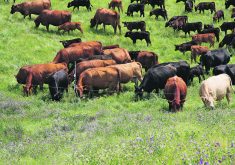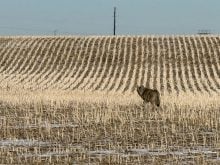In response to the letter by Donna O’Neil June 17, blaming rescue operations for contributing to the falling sale prices of horses, how absurd can one get?
Let’s call a spade a spade and openly acknowledge the elephant in the room. Slaughter has always been the outlet to deal with the excess number of horses produced by the industry. This is the dirty little secret that is becoming more and more public thanks to the internet and sites like YouTube where anyone can now go and view horses actually being slaughtered. This exposure has done away with the fantasy the industry has spread that slaughter is humane euthanasia.
Read Also

Agritechnica Day 3: Hybrid drive for a combine, data standards keep up to tech change and tractors of the year
Agritechnica 2025 Day 3: Hybrid drive for a combine, data standards keep up to tech change and tractors of the year.
In 2009, almost 100,000 horses met their demise at slaughter plants in Canada. This does not include the thousands that were sent to Mexico. The statement that rescue has become the rule rather than the exception, with their low adoption fees hurting breeders, is so far out there that I am not sure how to respond. The small number of horses that were rescued in that same time period does not even begin to put a dent in those numbers.
And please don’t tell me that these were 100,000 horses that were not healthy or worthy of being ridden. I have been at auction where healthy young horses are purchased by meat buyers. The slaughter industry thrives on the fact that the horse industry overproduces.
Horses are simply a financial commodity to breeders and little to no concern is put into their long-term welfare by most. If meat buyers are setting the prices that breeders can get for their stock, that can only mean one thing: too many horses are bred in North America.
The fact that breeders and the industry are fighting so hard to protect slaughter only reinforces the fact that the industry relies on the slaughter houses for disposal of their overflow.
Horses are originally bred for many different reasons in North America. Slaughter is not one of them. The consumption of horse meat is mainly an export business. The race horse industry has always relied on slaughter as it discards a loser like it was yesterday’s newspaper….
Obviously I do not agree with horse slaughter but I do agree that people deserve to have healthy food and the amount of drugs that competition/race horses receive is definitely a good reason they should not be put into the human food chain.
Bute was originally developed for humans but it was not safe and so went to the veterinary marketplace. It is considered that if a horse has had one treatment of bute it should not be consumed by humans ever.
That very statement means that no race or sports horse should ever be consumed, as we all know that bute is commonly used in those industries. Obviously once again the dollar is more important than the horse or the person who eats the horse.
I just don’t get how nations that were so worried about mad cow disease and almost destroyed the cattle industry in Canada happily chow down on horses whose meat almost certainly contains substances banned from the human food chain.
The horse slaughter industry is under pressure and the only constant in this world is change. It remains to be seen what that change will be, but the industry has to start to accept that humane treatment of animals is being demanded and the internet is working to keep them honest in what they actually do in response to that demand.
Theresa Nolet,
Penticton, B.C.














